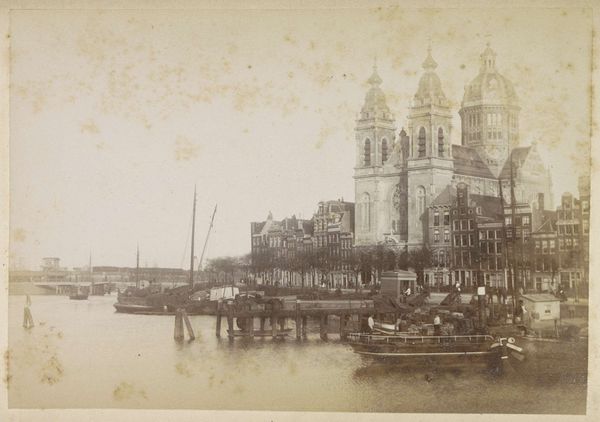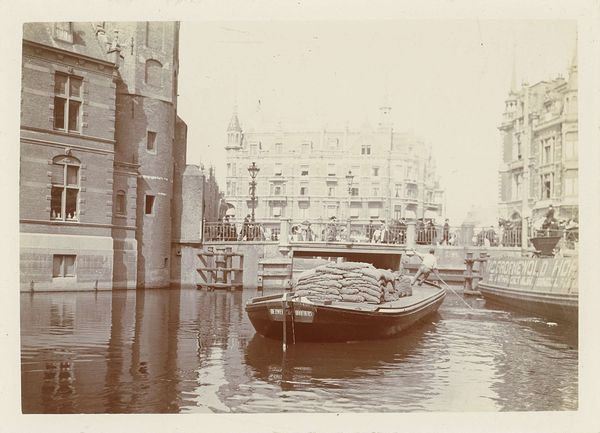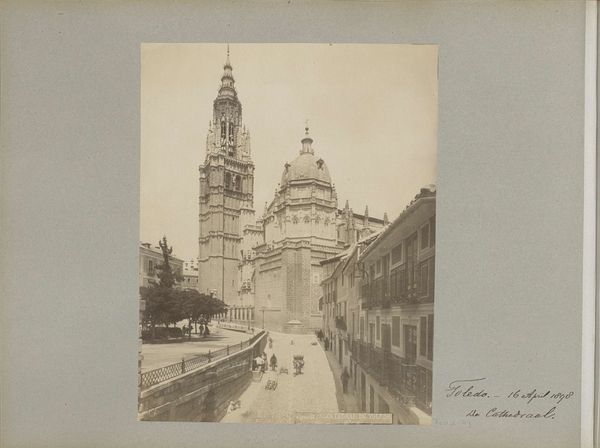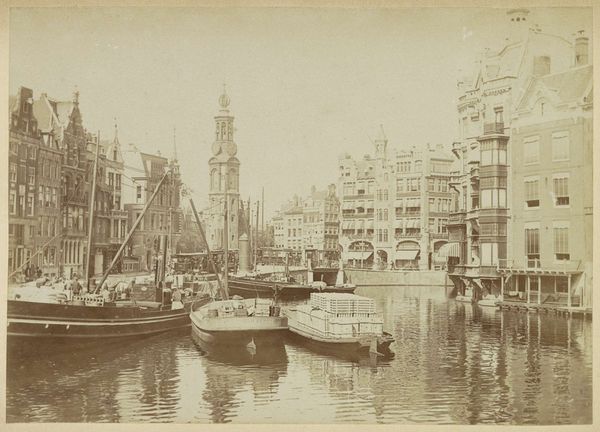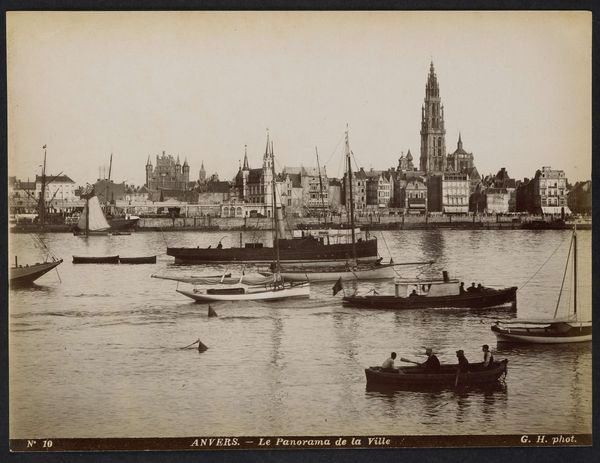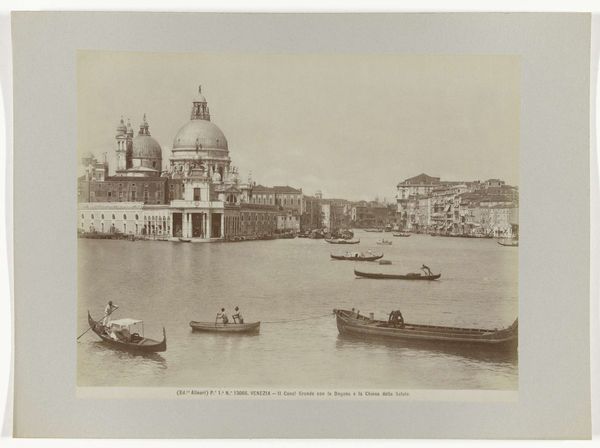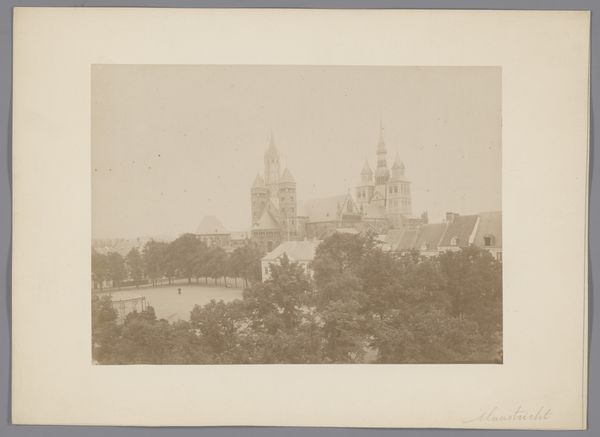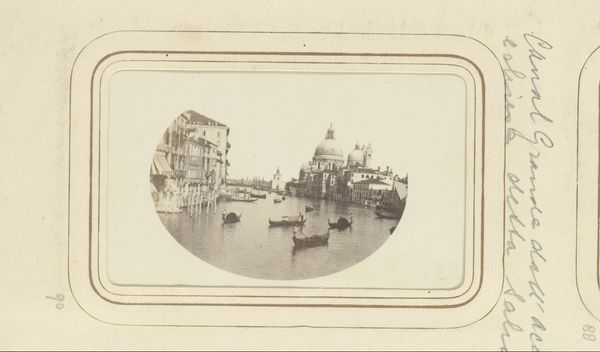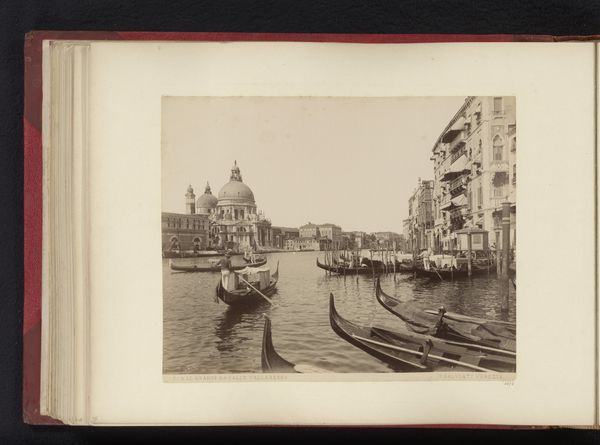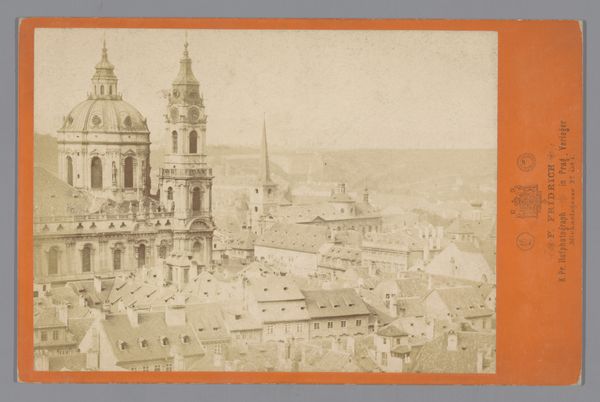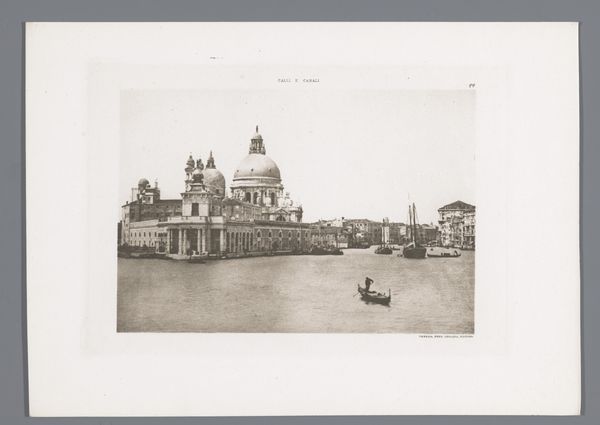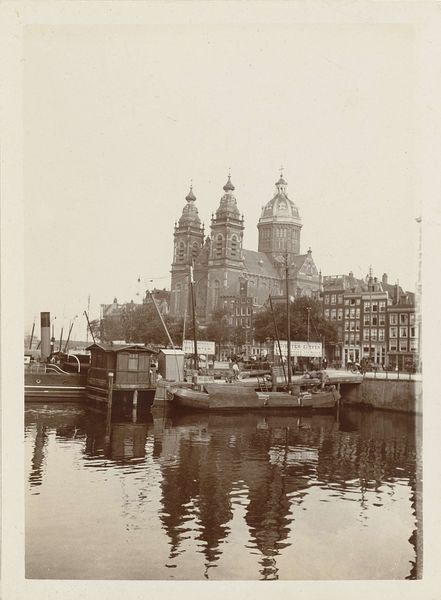
photography, gelatin-silver-print
#
photography
#
historical photography
#
gelatin-silver-print
#
cityscape
Dimensions: height 94 mm, width 133 mm
Copyright: Rijks Museum: Open Domain
Editor: This is a photograph titled "Gezicht op de Prins Hendrikkade en de Nicolaaskerk," taken before 1907 by Andries Jager. It’s a gelatin-silver print, and I find its sepia tones create a real sense of nostalgia. It really captures a bygone era. What social dynamics do you observe within the context of this cityscape? Curator: The sepia tone certainly evokes a romanticized past, but let’s think critically about this image. Who is included and excluded from this representation of Amsterdam? The prominent presence of the church and the bustling waterways speak to themes of commerce and faith. Who were the actors and beneficiaries in this economy? Also, the monumental architecture casts shadows – literal and figurative – over other stories, don't you think? Editor: That’s a good point. The focus definitely seems to be on the architecture and industry, possibly obscuring the lives of ordinary people. Are we perhaps seeing a glorified view of a specific class, or a carefully curated narrative about the city's identity? Curator: Precisely. This image, while seemingly objective, is a construct. Consider how the photographer chose this vantage point, emphasizing certain elements while marginalizing others. The composition implicitly celebrates specific socio-economic structures, doesn’t it? We need to consider not just what's depicted, but what remains unseen or deliberately obscured. What kind of resistance would happen outside the frame of this work? Editor: This makes me think differently about how photographs, even historical ones, can reinforce certain power dynamics. I hadn't considered the elements consciously or unconsciously left out, like marginalized communities. Curator: Exactly! Seeing isn't believing. By analyzing images like this one through the lens of social and historical power structures, we gain a deeper understanding of not just the past, but how it continues to shape the present. Editor: Thank you, it makes me consider art’s active role in defining identity, culture and the relationship to power.
Comments
No comments
Be the first to comment and join the conversation on the ultimate creative platform.
